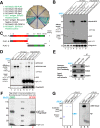Phosphorylation of PP1 Regulator Sds22 by PLK1 Ensures Accurate Chromosome Segregation
- PMID: 27557660
- PMCID: PMC5076521
- DOI: 10.1074/jbc.M116.745372
Phosphorylation of PP1 Regulator Sds22 by PLK1 Ensures Accurate Chromosome Segregation
Erratum in
-
Phosphorylation of PP1 regulator Sds22 by PLK1 ensures accurate chromosome segregation.J Biol Chem. 2016 Dec 9;291(50):26239. doi: 10.1074/jbc.A116.745372. J Biol Chem. 2016. PMID: 27941070 Free PMC article. No abstract available.
Abstract
During cell division, accurate chromosome segregation is tightly regulated by Polo-like kinase 1 (PLK1) and opposing activities of Aurora B kinase and protein phosphatase 1 (PP1). However, the regulatory mechanisms underlying the aforementioned hierarchical signaling cascade during mitotic chromosome segregation have remained elusive. Sds22 is a conserved regulator of PP1 activity, but how it regulates PP1 activity in space and time during mitosis remains elusive. Here we show that Sds22 is a novel and cognate substrate of PLK1 in mitosis, and the phosphorylation of Sds22 by PLK1 elicited an inhibition of PP1-mediated dephosphorylation of Aurora B at threonine 232 (Thr232) in a dose-dependent manner. Overexpression of a phosphomimetic mutant of Sds22 causes a dramatic increase in mitotic delay, whereas overexpression of a non-phosphorylatable mutant of Sds22 results in mitotic arrest. Mechanistically, the phosphorylation of Sds22 by PLK1 strengthens the binding of Sds22 to PP1 and inhibits the dephosphorylation of Thr232 of Aurora B to ensure a robust, error-free metaphase-anaphase transition. These findings delineate a conserved signaling hierarchy that orchestrates dynamic protein phosphorylation and dephosphorylation of critical mitotic regulators during chromosome segregation to guard chromosome stability.
Keywords: cell cycle; centromere; cyclin-dependent kinase (CDK); cytoskeleton; kinetochore; phosphatase; phosphorylation; tubulin.
© 2016 by The American Society for Biochemistry and Molecular Biology, Inc.
Figures





Similar articles
-
Spatiotemporal dynamics of Aurora B-PLK1-MCAK signaling axis orchestrates kinetochore bi-orientation and faithful chromosome segregation.Sci Rep. 2015 Jul 24;5:12204. doi: 10.1038/srep12204. Sci Rep. 2015. PMID: 26206521 Free PMC article.
-
Inhibitor-3 ensures bipolar mitotic spindle attachment by limiting association of SDS22 with kinetochore-bound protein phosphatase-1.EMBO J. 2014 Nov 18;33(22):2704-20. doi: 10.15252/embj.201489054. Epub 2014 Oct 8. EMBO J. 2014. PMID: 25298395 Free PMC article.
-
Sds22 regulates aurora B activity and microtubule-kinetochore interactions at mitosis.J Cell Biol. 2010 Oct 4;191(1):61-74. doi: 10.1083/jcb.200912046. J Cell Biol. 2010. PMID: 20921135 Free PMC article.
-
Polo-like kinase 1: target and regulator of anaphase-promoting complex/cyclosome-dependent proteolysis.Cancer Res. 2006 Jul 15;66(14):6895-8. doi: 10.1158/0008-5472.CAN-06-0358. Cancer Res. 2006. PMID: 16849530 Review.
-
Spindle checkpoint silencing: PP1 tips the balance.Curr Biol. 2011 Nov 8;21(21):R898-903. doi: 10.1016/j.cub.2011.08.063. Curr Biol. 2011. PMID: 22075433 Review.
Cited by
-
SDS22 selectively recognizes and traps metal-deficient inactive PP1.Proc Natl Acad Sci U S A. 2019 Oct 8;116(41):20472-20481. doi: 10.1073/pnas.1908718116. Epub 2019 Sep 23. Proc Natl Acad Sci U S A. 2019. PMID: 31548429 Free PMC article.
-
Methylation of PLK1 by SET7/9 ensures accurate kinetochore-microtubule dynamics.J Mol Cell Biol. 2020 Jul 3;12(6):462-476. doi: 10.1093/jmcb/mjz107. J Mol Cell Biol. 2020. PMID: 31863092 Free PMC article.
-
The Greatwall kinase safeguards the genome integrity by affecting the kinome activity in mitosis.Oncogene. 2020 Oct;39(44):6816-6840. doi: 10.1038/s41388-020-01470-1. Epub 2020 Sep 25. Oncogene. 2020. PMID: 32978522 Free PMC article.
-
Kinase and Phosphatase Cross-Talk at the Kinetochore.Front Cell Dev Biol. 2018 Jun 19;6:62. doi: 10.3389/fcell.2018.00062. eCollection 2018. Front Cell Dev Biol. 2018. PMID: 29971233 Free PMC article. Review.
-
Structure-Guided Exploration of SDS22 Interactions with Protein Phosphatase PP1 and the Splicing Factor BCLAF1.Structure. 2019 Mar 5;27(3):507-518.e5. doi: 10.1016/j.str.2018.12.002. Epub 2019 Jan 17. Structure. 2019. PMID: 30661852 Free PMC article.
References
-
- Lampson M. A., Renduchitala K., Khodjakov A., and Kapoor T. M. (2004) Correcting improper chromosome-spindle attachments during cell division. Nat. Cell Biol. 6, 232–237 - PubMed
MeSH terms
Substances
Grants and funding
LinkOut - more resources
Full Text Sources
Other Literature Sources
Molecular Biology Databases
Miscellaneous

